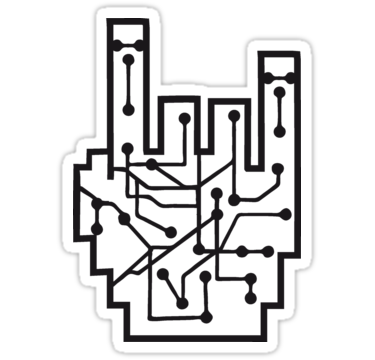
My interest in Biology began at elementary school. Because my father is a professor in Genetics and Marine Agriculture, I used to spend quite a large amount of time near the beach during summer break observing the cultivation of clams and shrimps. I still remember the excitement when I first saw a cell splitting under the microscope; and I still remember, in order to prevent me from biting my fingernails, my father showed me all the bacteria that were growing in the culture that contained a little piece of my fingernail tissue.
Growing up I wasn’t interested in Math or Computation science because of “endless” amount of practice problems I had to do in order to excel at school in China. The first person that introduced me to the beauty of Mathematics is Professor Justin Lynd – my professor for Introduction to Linear Algebra. Although the material was rather elementary; it is the logical nature and simple form of linear algebra that ignited my passion for math. What was truly amazing about Linear Algebra is that one can solve a set of high dimensional polynomials by simply applying the Gaussian Elimination, which can be easily interpreted by computers. Among all the undergraduate math courses I've taken, my favorite course is Dynamic Models in Biology taught by Professor Eduardo Sontag. He taught us how to use “Cobwebbing” (a simple but useful quantitative tool) to understand nonlinear discrete iteration. He also introduced us various biological system that can be interpreted by ODEs and PDEs such as Chemostat, Goldbeter-Koshland Model, and Chemotaxis. From his class I learned that it is not only possible but also necessary to understand biological systems using mathematical models. And by using quantitative models one can determine, predict, and even optimize the natural system.
During the first two years of undergraduate, I’ve worked at Professor Montelione’s Structural Bioinformatics Lab as a Lab assistant, undergraduate researcher, and Bernstein Scholarship Research Fellow. As a lab assistant, I started my research career by washing dishes and making buffer solutions a semester. Afterwards I was assigned into purification team, which focused on purifying target proteins and prepare sample for either X-ray crystallography or NMR. If there was anything I learned from my supervisor and colleagues at that time is that details are the most crucial part of experiment. Later on I was working on solving the structure of a protein complex (enzyme + coenzyme [NADPH] + cofactor [substrates]). And because of this project, I had a hands-on experience on primer design, PCR Amplification, transformation, protein expression, purification, and protein crystallization. During the summer of sophomore year, I was lucky enough to receive David and Dorothy Bernstein Scholarship from Professor Helen M. Berman in supporting my research in comparing disorder-region found in protein crystal structure data and software (such as SEG) prediction generated from PDB data. Through the summer program I learned how to use Python as a data-mining tool and R as a data-analyzing tool.
After leaving Professor Montelione’s lab, I joined BIOMOD Rutgers team: “Nzymes ‘R’ Us”. Under Dr. Sagar Khare’s lab, a protein engineering lab in Proteomics building at Rutgers, we worked on building spatially controlled protein assemblies/“scaffolds” (using green and red fluorescent proteins to test the feasibility). I've also helped the next generation of Rutgers biomath team with developing computational kinetics model
Towards the end of my undergraduate, I was working with Dr. Khare and Dr. Sontag on my interdisciplinary thesis about optimizing and predicting enzyme clustering. I had finished the first phase of my research, which was simulating two-step enzymatic reaction using Java and studying how the distribution will affect the general reaction rate. Dr. Khare from Chemistry department helped me to determine the correct value for enzyme-substrates reaction rate and diffusion coefficient. Dr. Sontag from the Math department taught me how to create a toy model to study the effect of each parameter on the general reaction rate. I am privileged to work with two great professors from different field of science. Every time we meet there will be new ideas from different field of studies. And I believe that collaboration is the future of science!
Currently my research interests are using stochastic models and statistical data to predict and optimize biological system. My research normally starts with creating toy models to simulate the biological system with limited boundary conditions. Then add more parameters and further study the system. Afterwards generate more complicated mathematical models to explain and examine the hypothesis. Finally, if applicable, further test my hypothesis in model organism such as bacteria, yeast, or fruit flies. Moreover, I am also interested in Evolutionary Genetics, especial using mathematical models to explore the fitness and biodiversity of ecosystem. I am particularly interested in using Fisher’s fundamental theorem of natural selection and evolutionary game theory to study the divergent of organisms.